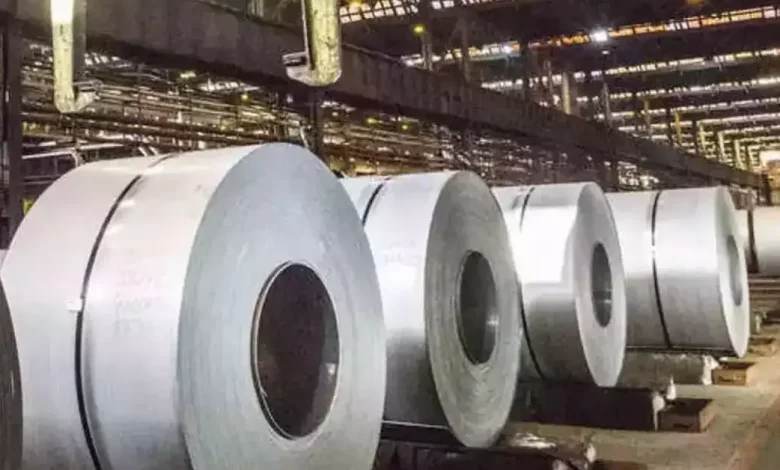
Context- The Government of India is working on Production Linked Incentive (PLI) scheme 2.0 to ensure adequate raw material supply for the steel sector in 2024.
Current status of Steel Industry in India
- India ranks as the second Largest Producer of Crude Steel in the world, surpassing Japan in 2018.
- The cumulative production of crude steel was 94.01 Million Tonnes (MT), during April-November 2023.
- The consumption of finished steel jumped 14% to 86.97 MT on an annual basis during April-November 2023.
- The installed steel manufacturing capacity of India is around 161 MT.
- Finished steel imports into India showed a growth of 18% to 5.87 MT in January-November 2023 from 4.96 MT in the same period of 2022.
- Exports from India showed a decline of 20% to 6 MT in January-November 2023 from 7.46 MT in the same period of 2022.
Concerns of Steel Sector in India
- Raw Material Availability and Cost: The steel industry heavily depends on the availability and cost of raw materials such as iron ore and coking coal.
- India remains dependent on imports to meet 90% of its coking coal requirement. In 2023, the imports will be between 70-80 MT.
- Infrastructure Bottlenecks: Inadequate transportation facilities, inefficient logistics, and power shortages, hinder the smooth operation of the steel industry. It also leads to increased production costs.
- Global Competition: The steel industry is highly competitive and Indian steel manufacturers face stiff competition from international players.
- Dumping of steel products especially from China and Vietnam in the past had major impacts on the industry.
Potential of Steel Sector in India
- Automobile Industry Growth: The automotive sector is a major consumer of steel. As India’s middle class expands and consumer purchasing power increases, there is a growing demand for automobiles, contributing to the demand for steel.
- Urbanization: With a growing population and increasing urbanization, there is a rising demand for housing, commercial spaces, and urban infrastructure. This trend contributes to a sustained demand for steel in construction and real estate sectors.
Steps taken by Government
- Steel Scrap Recycling Policy: The Policy is for promoting the scientific processing and recycling of ferrous scrap.
- National Steel Policy 2017 (NSP 2017): India has set the targets of achieving the total crude steel capacity of 300 MTPA and total crude steel demand/production of 255 MTPA by 2030-31.
- Policy for providing preference to Domestically Manufactured Iron and Steel Products (DMI & SP Policy) in government procurement which has resulted in import substitution of ₹34,800 Crore approximately.
- Brand India labeling: the Ministry of Steel has undertaken the initiative of Made in India branding of Steel produced in the country to differentiate Indian quality steel from the others.
Productivity Linked Incentive Scheme (PLI) for steel
- The Scheme was approved by the Government in 2021, with a financial outlay of ₹ 6,322 crores.
- Objective: To promote domestic manufacturing of ‘Specialty Steel’ within the country by attracting capital investment, generate employment and promote technology up-gradation in the steel sector.
- Features: It includes 3 slabs of incentives, participation only by companies registered in India, commitment to thresholds of investment and incremental production given in the scheme guidelines.
Specialty Steel
- It is a value-added steel wherein normal finished steel is worked upon by way of coating, plating, heat treatment etc.
- It is useful in applications requiring specific properties such as defense, space, power, automobile, specialized capital goods etc.
Way Ahead
- Technology Upgradation: Efforts are needed to push for the use of artificial intelligence and newer technologies among industry players to boost steel output while also reducing carbon emissions.
- Protect domestic market: Strong measures are required from the government to check the surge in imports which is affecting the domestic market.
- Efficient utilization of resources: India possesses significant reserves of iron ore and coal, key raw materials for steel production. Efficient utilization of these resources can contribute to the growth and competitiveness of the steel sector.
Source: The Hindu
Practice question:
Q. How many key sectors are targeted under the Production Linked Incentive (PLI) Schemes in India?
- 8
- 12
- 14
- 16





.png)



